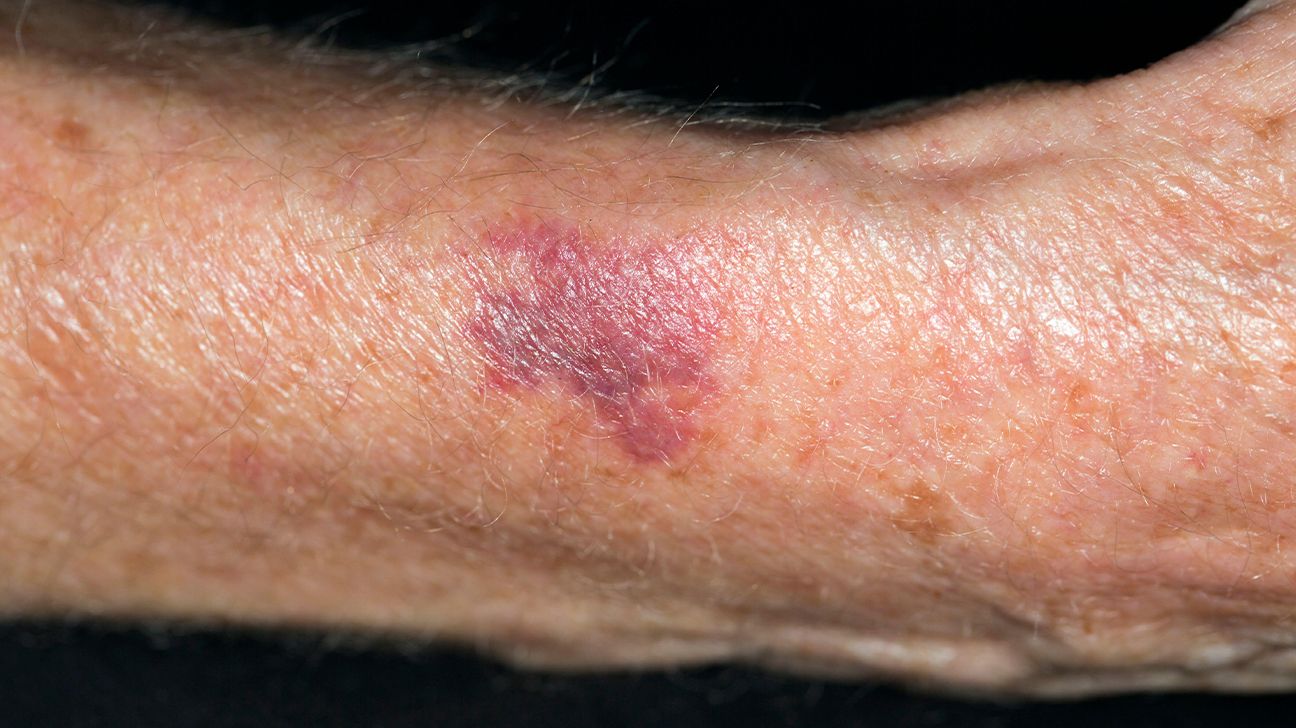Actinic purpura is benign, easy bruising that affects older adults. It’s sometimes called “senile purpura”. This occurs because the skin and the blood vessels become more fragile as we age, making it easier for our skin to bruise from minor trauma. This is different than conditions that cause easy bruising due to bleeding disorders.
Actinic purpura is fairly common, affecting about

The primary symptom of actinic purpura is large, purplish red bruises that are most common on the backs of the hands or the forearm. They become a brown discoloration as they fade.
These bruises typically last between one and three weeks before fading. They fade to brown instead of having the typical coloration of a fading bruise, which may look blue, green, or yellow at different healing points. The brown discoloration may fade, but it could be permanent.
While purpuric lesions most commonly occur on the hands and forearms, they can also occur on mucous membranes, including those in the mouth and even in internal organs.
The most common factor that most directly affects the development of actinic purpura is thin, easily damaged skin. Sun damage over a long period of time can also play a role in developing actinic purpura, as this can weaken our connective tissues over time.
Vascular diseases or medications that affect the blood vessels can also contribute to the development of actinic purpura. Diabetes, rheumatoid arthritis, and lupus may also increase the likelihood of developing the lesions.
Certain drugs, including corticosteroids and aspirin, may exacerbate the lesions.
In most cases, actinic purpura develops from minor trauma, even though it looks like the person sustained a serious injury.
If you’re experiencing a sudden increase in large bruises on your body, make an appointment with your doctor.
Your doctor will ask about your symptoms and medical history and do a physical assessment. If they see that your ecchymoses — or lesions — are painless and restricted to the hands and forearms with no other abnormal bleeding, they’ll likely diagnose you with actinic purpura.
In most cases, there is no treatment required for actinic purpura. However, some people dislike the appearance of the bruises and seek treatment.
Your doctor can prescribe topical retinoids that thicken your skin to prevent further skin aging. This then reduces the risk for actinic purpura. However, retinoids have many side effects that may outweigh any potential benefits.
Protecting your limbs by wearing shin guards can also help prevent minor trauma that causes bruising.
Natural remedies
Taking citrus bioflavonoids twice daily may also be a good natural remedy for actinic purpura. One
One
There has been some interest in topical vitamin K as a treatment for actinic purpura. One
Actinic purpura is not dangerous and is completely benign, but unless changes are made, the condition is likely to be recurring. Wearing sunblock can help protect your skin from further sun damage.
Most purpuric lesions last between one and three weeks, though the discoloration may be permanent after they fade. You can talk to your dermatologist about how to reduce their appearance.
